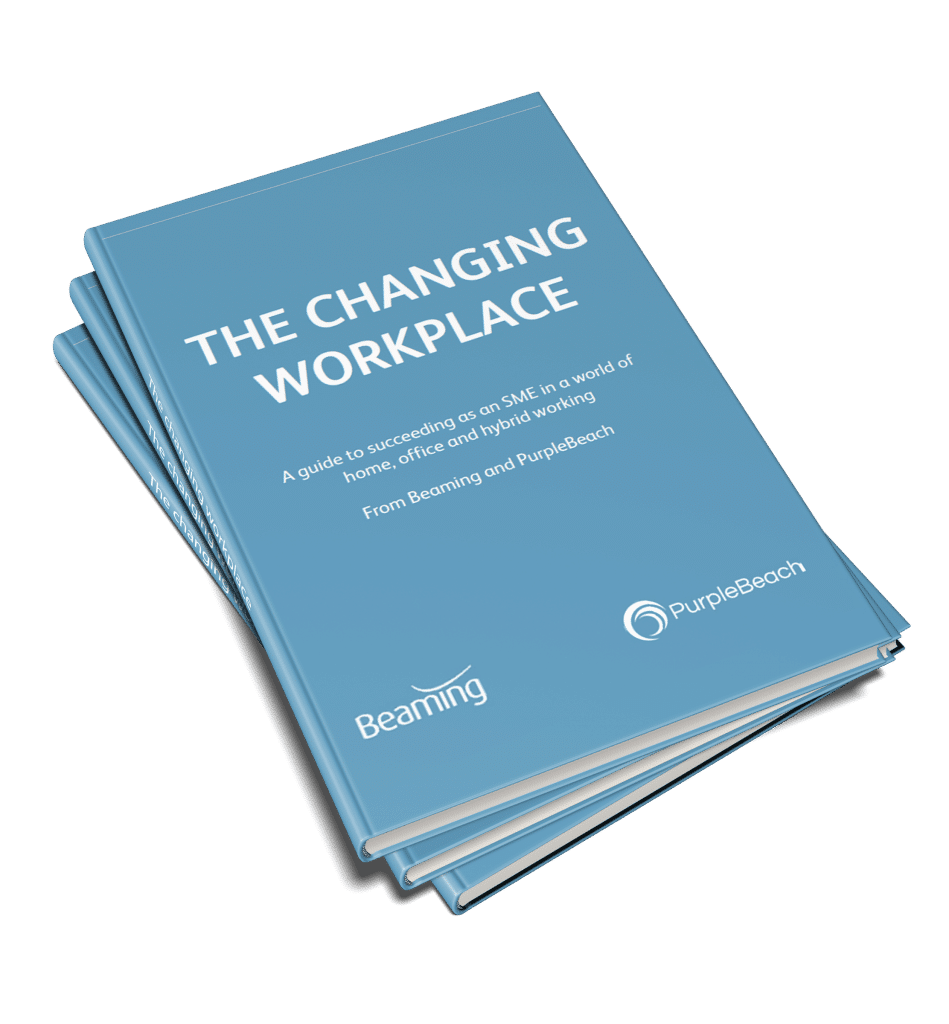New survival guide for hybrid working
A group of workplace experts, led by Beaming, alongside PurpleBeach, a people innovation consultancy, today launched The Changing Workplace, a new guide for SME leaders offering advice to help keep businesses and employees healthy, productive and engaged in the new world of hybrid working.
The report provides insight into how Covid-19 has affected employee working and wellbeing from Dr Heejung Chung, an expert in flexible working and wellbeing at the University of Kent, as well as advice to help leaders adapt to new working arrangements created by the pandemic from Andrea Derler, Director of Industry Research at the NeuroLeadership Institute.
The Changing Workplace also shares tips around the use of technology to support employee engagement and innovation, advice on securing hybrid working arrangements, and insight into how the leaders of McCarthy Recruitment, Opinium and BigChange, UK-based SMEs recognised for their approaches to employee engagement, adapted to lockdown.
Sonia Blizzard, Managing Director of Beaming, comments: “We’ve engaged a group of experts to create The Changing Workplace, a survival guide for SMEs adapting to the new realities of hybrid working. Knowing that employees and business systems are experiencing new kinds of stress is simply not good enough, leaders need to take action to ensure the resilience of their people and organisations.”
Annemie Ress, founder of PurpleBeach, comments: “There is no new normal, only new. This report contains some of the best advice available to help navigate what’s new, but organisations are unique, so leaders must find a way to make this thinking work for their own people in this new world of hybrid working.”
Top 5 tips for better hybrid working
1. Watch out for overworking
Sonia Blizzard of Beaming, said: “Without clear boundaries, work will spill over into the beginning and end of the day. The tendency for many employees when removed from the structure of an office routine is to overwork. This can lead to inefficiency and burnout, so overwork needs to be addressed.”
2. Accept that there isn’t a one-size-fits-all solution
Annemie Ress of PurpleBeach, said: “Policies that were set up to address the needs of the ‘workforce’ now need to address the needs of the individual. Despite being connected online, the work environment and the needs that come with it varies so drastically from person to person that employers can no longer resort to a blanket approach.”
3. Draw boundaries for your employees
Dr Heejung Chung from the University of Kent, said: “Working long hours has been shown to decrease per-hour productivity, lower motivation and loyalty, and affect health which can cause sickness and absenteeism. Keep the message very clear – ‘We don’t want you to be working all the time’. Because that isn’t beneficial for anyone.”
4. Keep everyone in the loop
Andrea Derler at the NeuroLeadership Institute, said: “Leaders need to be open and transparent about decision-making processes. Rather than cascading information from the top, hoping it trickles down to everyone through layers of management, share it with the entire organisation at the same time.”
5. Protect the workplace chatter
Sonia Blizzard of Beaming, said: “If your only interaction with colleagues is in a corporate setting you’re going to feel burnt out. Allow employees time during the week for quick, impromptu chats with workmates. Hearing about everyone’s shared experiences is reassuring and motivating, and can prevent feelings of isolation.”
